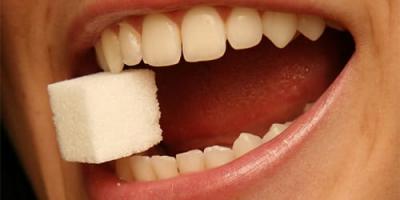Municipal educational institution "Poselkovskaya secondary school No. 1"
Conversation with students on the topic
"HEALTHY EATING"
Prepared and conducted by class teacher M. M. Pishchaskina.
2012
Goals and objectives:
- help students think about the need to be healthy, familiarize themselves with healthy image life;
- work on skills development healthy eating,
- develop attention and cognitive interest;
- to cultivate students’ responsible attitude towards their health.
There's a knock on the door and they bring a letter. The teacher reads the letter.
"Hello guys! I am the sickest person in the world, very well-fed and moderately educated!!! I am writing my letter from the hospital. Something happened to my health: my body aches, there are stars in my eyes, my ears are ringing. And I don’t want to have fun and be naughty at all. I love to fly over the roofs of houses and play with the Kid, but the doctor doesn’t allow me. What should I do? Help!"
Guys, I wonder who sent us this letter?
Guys, do you like to get sick? Why? Why is being sick bad?
So it's better to be healthy. Why do we need health?
How many of you consider yourself healthy?
How can we even determine whether we are healthy or not?
What does our health depend on?(ecology, lifestyle, work and sleep patterns, sports, diet and food)
Why does a person eat?(children's answers)
Yes, you are right, for the normal functioning of the body, every person needs proteins, fats, carbohydrates, vitamins, mineral salts and water, which must come with food.
And with how many times a day should you eat?(children's answers)
Breakfast:
What we had for breakfast in the morning affects our mood and well-being all day. Delicious breakfast must be healthy and versatile, but in no case monotonous. The general opinion is that breakfast You should definitely eat porridge.
Second breakfast (at school):
Good breakfast - this does not mean eating so much that you can’t get up from your chair. Good breakfast implies an optimal combination of products containing proteins, carbohydrates, fats, vitamins and other beneficial substances that the body needs after sleep.
Dinner:
Dinner - second or third meal of the day (usually after the first or second breakfast). Typically on dinner hot food served
Afternoon snack:
You can have buns, waffles, cookies with tea, juice or milk for an afternoon snack.
Dinner time:
Dinner is the last meal before bed. To sleep well and rest at night, you can eat only light food for dinner:casseroles, cottage cheese, omelet, kefir, yogurt.
The diet should be varied - different nutrients enter the body with different foods.
Food should be chewed thoroughly. Shredded food is easier to digest.
Avoid overeating - the digestive system cannot cope with excess food, food undergoes fermentation and rotting, and the body is poisoned.
Take your time while eating - the duration of the meal should be at least 20 minutes with one dish and 30-40 minutes with two. This way satiety is achieved without overeating.
Why do you get tired faster in the spring, quarrel with each other more, and get sick more?(not enough vitamins)
Did you know that the word vitamin consists of 2 parts: “amine” means “to carry”, and “vita” means “life”. So, vitaminmeans "carrier of life". If there are few or no vitamins in the body, people get sick.
Where are the most vitamins found?(in fruits and vegetables)
Crossword: “Vegetables - fruits”
Horizontally:
I am rosy Matryoshka
I won’t tear you away from my friends,
I'll wait until Matryoshka
It will fall into the grass on its own. ( Apple)
They look like cucumbers
They only grow in ligaments,
And these fruits for breakfast
They serve the monkeys. (Banana)
Blue uniform, white lining,
It's sweet in the middle. (Plum)
This sweet fruit is good and delicious,
He looks like a fat woman in shape. (Pear)
It's not very easy to guess -
This is the kind of fruit I know -
It's not about coconut
Not about the pear, not about the plum, -
There is also such a bird,
Also called -... (Kiwi)
Neither in the fields nor in the gardens,
Neither you nor us,
And in the tropical forests
Grows... (Pineapple)
Vertically: Golden and healthy
Vitamin, although sharp,
It has a bitter taste.
When you clean, you shed tears. ( Onion)
The lady sat down in the garden bed,
Dressed in noisy silks.
We are preparing tubs for her
And half a bag of coarse salt.(Cabbage)
What kind of trotter is this
Did you fall over on your side?
He's well-fed and lettuce-y.
That's right, this is... (Zucchini)
Although I am called sugar,
But I didn't get wet from the rain,
Large, round, sweet in taste,
Did you find out who I am? ... (Beet)
Round, not a month,
Yellow, not oil,
Sweet, not sugar
With a tail, not a mouse. (Turnip)
Guys, let's visit Carlson in the hospital! Let's collect food for him so that he recovers faster.
Each child has a sheet with a set of products: Pepsi, kefir, Fanta, chips, rolled oats, sunflower oil, cakes, Snickers, carrots, cabbage, chocolates, apples, pears, bread.
Choose foods that will be good for Carlson.
Reflection
Teacher: Well, now I ask you to stand in a large circle.
There is a wonderful custom of extending a hand to each other, shaking it, thereby wishing health to your neighbor. By extending his hand, a person shows that he is open to communication and does not hold a grudge against anyone. Shake each other's hand. Look at the chain of handshakes we have. Convey your kindness to each other along this chain, share your enthusiasm and good mood!
RATIONAL NUTRITION
We all know that we need to eat rationally. But instead, we snack on the run, abuse sweets and fatty foods, and ignore vegetables. And then we wonder why the wasp waist remains only in photographs, fat appears on the stomach, and the stomach begins to ache treacherously. The reason for such metamorphoses should be looked for in your plate. And, if you want to stay healthy, slim and cheerful, you urgently need to change your gastronomic habits and take the path rational nutrition.
PRINCIPLES OF RATIONAL NUTRITION
Rational nutrition is the most balanced combination of fats, carbohydrates, proteins, vitamins, amino acids, microelements and other substances in the human diet. Such a correct approach to nutrition allows you to avoid many health problems, such as immune disorders, atherosclerosis, obesity, digestive diseases, etc.
So, what are the basic principles of rational nutrition:
PRINCIPLE #1.
MODERATION, MODERATION AND AGAIN MODERATION!
This postulate can be considered the basic rule of rational nutrition. The amount of food that enters our body and is converted into energy must be equal to energy expenditure. But in reality, it is this principle that becomes one of the most violated.
PRINCIPLE 2: ALL NUTRIENTS SHOULD BE STRICTLY BALANCED
Every day our body needs to receive approximately 70 different ingredients. Many of them are considered essential because they cannot be synthesized by the body, and the only way to get them is through food. The ideal ratio of proteins, fats and carbohydrates is 1:1:5. For people who have average physical activity, this figure is equal to 100 g of protein, the same amount of fat and, accordingly, 400 g of carbohydrates.
PRINCIPLE 3. DIETARY VARIETY
Only if your diet is varied will your body be able to get all the nutrients it needs. That is why, try not to get hung up on the same products, but, on the contrary, strive to expand your menu as much as possible.
PRINCIPLE 4. COMPLIANCE WITH A DIET REGIME
2) exclusion of food in the intervals between main meals;
3) the time between breakfast and lunch, lunch and dinner should be 5-6 hours, and the interval between dinner and the start of sleep should be 3-4 hours;
4) the set of products at each meal should provide an optimal ratio of all necessary nutrients; a healthy person should receive more than 2/3 of the total calories of the daily diet at breakfast and lunch, and less than 1/3 at dinner;
5) eating at strictly established hours; the time factor plays a big role in the formation of conditioned reflex reactions (secretion of saliva, gastric juice); the body seems to be preparing to receive and digest food;
6) take your time while eating; So, you don’t need to spend much on food during lunch.
less than 30 minutes;
7) thorough, leisurely chewing of food (good dental condition);
8) the last meal (no later than 1.5-2 hours before bedtime) should include only low-calorie foods (milk, fermented milk drinks, fruits, juices); Fried foods, foods rich in fats, coarse fiber, spices, and table foods are prohibited;
9) cleanliness, comfort of the dining room, good table setting; eliminating factors that distract from eating (talking, radio, television, reading, etc.).
Remember that failure to follow the rules of a balanced diet is one of the main reasons for the development of diseases of the digestive organs ( peptic ulcer, chronic, colitis, etc.).
Modern achievements of science indicate that by changing the nature and diet, you can positively influence the metabolism, adaptive capabilities of the body and, therefore, have a beneficial effect on the pace and direction of the aging process. Poor nutrition and violations of its regime are important sources various diseases.
What diseases can occur due to poor nutrition?
Firstly, diseases caused by a deficiency or excess of certain nutrients in the diet: nutritional dystrophy, obesity, vitamin deficiency, etc.
Secondly, poor nutrition plays a big role in the development of diseases such as atherosclerosis, coronary heart disease, hypertension, gout, cholelithiasis, and diseases.
Send your good work in the knowledge base is simple. Use the form below
Students, graduate students, young scientists who use the knowledge base in their studies and work will be very grateful to you.
Posted on http://www.allbest.ru/
Regional State Budgetary Educational Institution of Secondary Vocational Education
"Angarsk Medical School"
Conversation
On the topic: “Principles of rational nutrition"
Completed by: student
gr.3b-9 Churina A.E.
Angarsk 204
Eating right is important because it allows you to:
Prevent and reduce the risk of chronic diseases
Stay slim and beautiful
Just like fresh air And pure water, quality, balance, variety of food and diet are key to human health.
Balanced diet- this is nutrition that ensures growth, normal development and vital activity of a person, helping to improve his health and prevent disease.
Rnational nutrition presupposes:
1. Energy balance
2. Balanced diet
3. Compliance with diet
First principle: energy balance
The energy value of the daily diet should correspond to the energy expenditure of the body.
The body's energy consumption depends on gender (in women they are lower on average by 10%), age (in older people they are lower on average by 7% in each decade), physical activity, and profession. For example, for people engaged in mental work, energy consumption is 2000 - 2600 kcal, and for athletes or people involved in heavy physical labor, up to 4000 - 5000 kcal per day. rational nutrition balanced healthy
Second principle: balanced nutrition
Each organism needs a strictly defined amount of nutrients, which must be supplied in certain proportions. Proteins are the main building material body, a source of synthesis of hormones, enzymes, vitamins, antibodies. Fats have not only energy, but also plastic value due to the content of fat-soluble vitamins, fatty acids, and phospholipids. Carbohydrates - main fuel material for the life of the body. The category of carbohydrates includes dietary fiber (fiber), which plays important role in the process of digestion and absorption of food. IN last years Dietary fiber has received much attention as a means of preventing a number of chronic diseases, such as atherosclerosis and cancer. Important for correct exchange substances and ensure the functioning of the body have minerals and vitamins.
According to the principle of balanced nutrition, the provision of essential nutrients implies the supply of proteins, fats, and carbohydrates in the body in a strict ratio.
Proteins 10 - 15% of the daily calorie content should be provided, while the proportion of animal and plant proteins should be the same. The optimal amount of protein should be 1 g per 1 kg of weight. So for a person weighing 70 kg, the daily protein intake is 70 g. In this case, half of the protein (30 - 40 g) should be plant origin(sources - mushrooms, nuts, seeds, cereals and pasta, rice and potatoes). The second half of the daily protein intake (30 - 40 g) should be of animal origin (sources - meat, fish, cottage cheese, eggs, cheese).
Optimal consumption volume fat- 15 - 30% calorie content. A favorable ratio of vegetable and animal fats is considered to be one that provides 7-10% of calories from saturated, 10-15% monounsaturated and 3-7% polyunsaturated fatty acids. In practice, this means consuming an equal proportion of vegetable oils and animal fats contained in foods. The optimal amount of fat should be 1 g per 1 kg of weight. Considering that half daily requirement animal fats are found in products of animal origin; it is rational to use vegetable oils (30 - 40 g) as “pure” fat.
Saturated fatty acids are found primarily in hard margarines, butter and other animal products. The main source of polyunsaturated fatty acids are vegetable oils - sunflower, soybean, corn, as well as soft margarines and fish. Monounsaturated fatty acids are found mainly in olive, rapeseed, and peanut oils.
Carbohydrates 55 - 75% of daily calories should be provided, the main share of which comes from complex carbohydrates (starchy and non-starchy) and only 5 - 10% from simple carbohydrates (sugars).
Simple carbohydrates dissolve well in water and are quickly absorbed by the body. Sources of simple carbohydrates are sugar, jam, honey, sweets.
Complex carbohydrates are much less digestible. Fiber is one of the indigestible carbohydrates. Despite the fact that fiber is practically not absorbed in the intestines, normal digestion is impossible without it.
Action of fiber:
Increases the feeling of fullness;
Helps remove cholesterol and toxins from the body;
Normalizes intestinal microflora, etc.
Dietary fiber is found in most types of bread, especially wholemeal bread, cereals, potatoes, legumes, nuts, vegetables and fruits.
Consuming enough fiber-rich foods plays an important role in normal bowel function and can reduce symptoms of chronic constipation, hemorrhoids, and reduce the risk of coronary disease heart and some types of cancer.
Proteins - 10 - 15%
Fats - 15 - 30%
Saturated fatty acids (SFA) - 7 - 10%
Monounsaturated fatty acids (MUFA) - 10 - 15%
Polyunsaturated fatty acids (PUFA) - 3 - 7%
Carbohydrates - 55 - 75%
Complex carbohydrates - 50 - 70%
Dietary fiber - 16 - 24%
Sugar - 5 - 10%
Third principle: diet
Meals should be fractional (3 - 4 times a day), regular (at the same time) and uniform, the last meal should be no later than 2 - 3 hours before bedtime.
The modern model of rational nutrition looks like a pyramid. Based on it, you can create a balanced diet for every day.
To ensure a healthy diet, it is important to adhere to the basic rules that will allow you to create a balanced diet.
Ninehealthy eating rules:
1. You should consume a variety of foods.
Foods contain a variety of food combinations, but there is no single food that can meet all of the body's nutritional needs. Most of the nutrients necessary for the body are found in sufficient quantities in foods of plant origin. At the same time, there are foods that contain some nutrients and practically no other ones, for example, potatoes contain vitamin C, but no iron, and bread and legumes contain iron, but no vitamin C. Therefore, nutrition should be as varied as possible, and following special diets is possible only after the recommendation of a doctor.
2. At every meal you should eat any of the following foods: bread, cereals and pasta, rice, potatoes.
These products are an important source of protein, carbohydrates, fiber and minerals (potassium, calcium, magnesium) and vitamins (C, B6, carotenoids, folic acid).
Bread and potatoes belong to the group of products with the lowest energy content (if no cream is added to them, vegetable oil or other types of fats or sauces that enhance flavor but are high in energy). Most types of bread, especially wholemeal bread, cereals and potatoes, contain various types of dietary fiber.
3. You should eat a variety of vegetables and fruits several times a day (more than 500 grams per day in addition to potatoes). Preference should be given to locally produced products.
Vegetables and fruits are sources of vitamins, minerals, starchy carbohydrates, organic acids and dietary fiber.
Vegetable intake should exceed fruit intake by approximately a 2:1 ratio. One dietary risk factor thought to contribute to the increased incidence of coronary heart disease and cancer is deficiency of antioxidants (carotenoids, vitamins C and E). This deficiency can be filled with vegetables and fruits. A lack of antioxidants promotes excess cholesterol oxidation, which, combined with an excess of “free radicals” that cause cell damage in the vascular walls, contributes to the development of atheromatous vascular plaques. Legumes, peanuts, green vegetables such as spinach, Brussels sprouts and broccoli are sources of folic acid. Folic acid may play an important role in reducing risk factors associated with the development of cardiovascular diseases, cervical cancer, and anemia. Recent studies have confirmed that folic acid may play an important role in the formation nervous system fetus According to the findings, women of reproductive age are advised to eat more foods rich in folic acid.
Consuming vegetables and fruits containing vitamin C along with iron-rich foods such as legumes and grains will improve iron absorption. Sources of iron are leafy greens from the cabbage family - broccoli, spinach. Vegetables and fruits also contain B vitamins and the minerals magnesium, potassium and calcium, which may reduce the risk of high blood pressure.
The availability of fresh vegetables and fruits varies by season and region, but frozen, dried and specially processed vegetables and fruits are available throughout the year. It is recommended to give preference to seasonal products grown locally.
4. You should consume milk and dairy products low in fat and salt (kefir, sour milk, cheese, yogurt) daily.
Milk and dairy products provide the body with many nutrients and are rich in protein and calcium. By choosing low-fat foods, you can provide your body with enough calcium and keep your fat intake low. Skim (or skim) milk, yoghurts, cheeses and low-fat cottage cheese are recommended.
Legumes, nuts, as well as meat, poultry, fish and eggs are important sources of protein. Preference should be given to lean meats, and visible fat should be removed before cooking. The quantity of meat products such as sausages and frankfurters should be limited in consumption. Portions of meat, fish or poultry should be small.
Excessive consumption of red meat can negatively affect human health. There is evidence of a link between red meat consumption, especially when combined with low vegetable consumption, and the development of colon cancer.
6. You should limit your consumption of sugars: sweets, confectionery, sugary drinks, dessert.
Sugars contribute to the development of caries. The more often a person eats sweets or drinks sugary drinks, and the longer they stay in the mouth, the higher the risk of developing caries. Thus, net consumption of sweets and sugary drinks between meals (snacks) may be more detrimental to dental health than consuming sweets and sugary drinks at meals followed by brushing. Regular oral hygiene using fluoride toothpastes, dental floss, and adequate fluoride intake can help prevent tooth decay.
As a practical measure to regulate the amount of sugar consumption, you can use drinking control. It should be recommended to drink water, juices and mineral water rather than sweet soft drinks (for example, a bottle of lemonade with a volume of about 300 ml contains 6 teaspoons or 30 g of sugar). The need for liquid (water) is satisfied through the consumption of drinks, but not food. Products provide the body with water more than half. Fluids must be consumed in adequate quantities, especially in hot climates and with increased physical activity.
The average consumption of all liquids should be 2 liters per day.
7. The total consumption of table salt, taking into account its content in bread, canned and other foods, should not exceed 1 teaspoon (6 grams) per day. It is recommended to use iodized salt.
Table salt is found naturally in foods, usually in small quantities. Salt is often used for special processing and preservation of foods. In addition, most people add salt to their food at the table. The upper limit of salt intake in accordance with the recommendations of the World Health Organization for a healthy person is 6 g per day, for arterial hypertension - 5 g per day.
Salt is predominantly consumed with processed foods special treatment(about 80% of total salt consumption). Therefore, it is recommended to consume canned, salted, smoked foods (meat, fish) only in small quantities and not every day. Food should be prepared with minimum quantity salt, but to improve taste qualities add herbs and spices. It is better to remove the salt shaker from the table.
Avoid foods containing a lot of salt (canned, salted, smoked).
Pay attention to the labeling of products that have undergone special processing, indicating the salt content in them.
Increase consumption of low-salt foods (vegetables, fruits).
Reduce the amount of salt added during cooking.
Before automatically adding salt to food, you should first taste it, and it is better not to add salt at all.
8. Ideal body weight should correspond to the recommended limits (BMI - 20 - 25). To maintain it, in addition to following the principles of rational nutrition, you should maintain a moderate level of physical activity.
About half of the adult population of our country is overweight. Obesity is associated with an increased risk of high blood pressure, coronary heart disease, stroke, diabetes mellitus, various types cancer, arthritis, etc.
Weight maintenance is facilitated by the type and amount of food consumed, as well as the level of physical activity. Consumption of foods high in calories but low in nutrients contributes to weight gain. Therefore, vegetables and fruits (fresh, frozen, dried) are recommended as the main components of a healthy diet, in addition to potatoes, rice and other grains.
9. Preference should be given to cooking foods by steaming, boiling, baking or in the microwave.
Reduce the addition of fats, oils, salt, sugar during cooking. Choose a variety of foods (fresh, frozen, dried), primarily locally grown.
A variety of fresh and properly prepared food, without unnecessary additives, allows you to achieve the required completeness and balance of the diet.
Posted on Allbest.ru
Similar documents
The need to organize rational nutrition for children. Average daily norms of nutrients and energy for adolescents: carbohydrates, proteins, fats, vitamins. Basic aspects of rational nutrition. Therapeutic nutrition in a health camp, sample menu.
course work, added 04/26/2012
Rules for rational healthy eating, classification and characteristics of products. Principles, advantages and disadvantages of separate nutrition. The essence of vegetarianism and raw food diet. Consumption of genetically modified products and fast food, its consequences.
abstract, added 11/25/2010
Organization of rational nutrition for miners; features of cooking, taking into account energy costs and physiological norms of food consumption. Development of a diet, menu in the canteen of the Zyryanovskaya mine; maintenance in mine workings.
course work, added 12/21/2011
Calculation nutritional value dishes. Assessment of population nutrition. Changing the diet menu and bringing it into line with the formula of a balanced diet. Evaluation of the food set. Recommended daily intake of vitamins, proteins, fats and carbohydrates.
test, added 10/13/2012
Functions of the nutrition process. Basic nutrients: proteins, fats, carbohydrates, vitamins, water. The importance of rational nutrition for the development of schoolchildren. Harm to health from modern food products. Characteristics of raw food diet and vegetarianism.
abstract, added 01/13/2012
Organization of rational nutrition for schoolchildren. Sanitary rules and regulations that satisfy the principles of rational nutrition. Length of intervals between meals. Working with semi-finished products, container delivery of products. Forms of service.
presentation, added 11/25/2014
Human diet in the process of evolutionary development. The main factors determining the human diet. Food culture. Scientifically based principles of human nutrition. Balanced diet. Adequate nutrition.
abstract, added 09/04/2006
State policy in the field of healthy nutrition of the population, the main goal of which is to preserve and strengthen the health of the population and prevent diseases associated with poor nutrition in children and adults. Principles of rational nutrition for children.
course work, added 01/31/2011
Methodological principles for designing functional food products. Creation of food products with specified functional properties. Enterprise production program Catering. Organization of production of culinary products.
tutorial, added 05/26/2013
The essence of food hygiene is a branch of hygiene that studies the problems of adequate and rational human nutrition depending on gender and age, profession and nature of work, climatic conditions and physical activity. Hygienic characteristics of fruits.
Elena Pashkova
Summary of a conversation with children “Healthy and unhealthy food”
I would like to bring to your attention conversation with children middle group on promoting a healthy lifestyle « Healthy and unhealthy food» , the purpose of which is to consolidate children's knowledge about wholesome and healthy food; continue to educate children about the importance of vitamins and minerals in human life; to instill in preschoolers a desire for a healthy lifestyle.
Progress of the conversation:
Educator: invites children to talk about whether a person can live without food.
Children: - can not; the person will be sick; will be weak; may die.
Educator: - Guys, why do you think a person can’t go without food for a long time?
Children: - if a person does not eat for a long time, then he will not have the strength to walk; Your head and stomach will hurt.
Educator: - What does a person eat?
Children: called food products.
Educator: - Guys, that’s right, a person eats vegetables, fruits, meat, fish, dairy products. Do you know what animals eat?
Children: - eat grass, twigs from trees, insects.
Educator: - Right. All living beings, from the smallest to the largest, eat, but as soon as they stop eating, the body begins to weaken. Do you know why this happens?
Children: - food helps humans and all living things live, the body grow and develop, because foods contain nutrients.
Educator: - Tell me what nutrients are in the foods.
Children: name the products and their beneficial features.
Educator: - Guys, do you have a favorite food? Name your favorite food.
Children: - juice, vegetable salad, fruit salad, soup, chips, etc.
Educator: - Well, guys, now you know what food you should eat and what you should refuse so as not to harm your health. In our kindergarten the chefs prepare only the best healthy food, and you must eat everything so as not to get sick, to grow big, healthy and beautiful.
Publications on the topic:
The purpose of the game is to consolidate children's ideas about healthy and unhealthy foods for teeth. Rules of the game: On the playing field, place a tooth around it.
 We recently had our “ABC of Health” week. Where does our health begin? Of course, with proper nutrition. And the guys and I 2.
We recently had our “ABC of Health” week. Where does our health begin? Of course, with proper nutrition. And the guys and I 2.
Lesson summary “Healthy and unhealthy foods” (joint activity of children, parents, preparatory group teacher) Objectives: To consolidate children’s ideas about which foods are healthy and which are harmful to the body. Bring them to understand the contradiction: me.
Conversation “On the role of nutrition in schoolchildren’s daily routine”
Form:thematic conversation with students with elements of role-playing dialogue.
Target: demonstrating to students the importance of their physical and mental health.
Tasks:
1. Educational:Foster a culture of preserving and improving one’s own health, a negative attitude towards unhealthy foods, a willingness to communicate, and cultivate a culture of communication and behavior.
2. Developmental: Form the habit of eating right and following a diet. Develop choice skills the right products nutrition and daily diet planning
3. Educational:Introduce children to the principles of healthy eating based on modern research materials. Increase student activity in class. Work on conscious assimilation of the material
Equipment: colored chalk for decorating the board - drawing up a pyramid of proper nutrition.
Board design:During the lesson, a healthy eating pyramid is built on the board.
Plan:
1. Organizational moment. Greetings.
2 . Conversation about health. Topic message
3. Test “Are you eating right?”Conversation about healthy and unhealthy foods. Presentation of a healthy eating plan using the example of the “Healthy Eating Pyramid”. Development of a proper nutrition regimen and menu.
4. Conclusion
Classroom teacher:
Before we start our conversation, I will ask you a few questions and you will answerat them, raising his hand. Do you like to get sick? Why?
So it's better to be healthy. Tell me, please, what is health in general? How do you understand it and why do we need health?
How many of you consider yourself healthy? Why? How can we even determine whether we are healthy or not? What can we call health indicators? Appearance, well-being, mood. Guys, what does our health depend on?
From the environment, lifestyle, work and rest patterns, sports, and what we eat and how we eat.
We will devote our conversation today to the most important factor, affecting our health - proper nutrition.
Do you think you are eating right? By what principle do you choose what to eat? Do you know which foods are healthy and which are harmful? What would you prefer for breakfast - a hamburger and Coca-Cola or oatmeal and fruit juice? For lunch - cabbage soup with beef and compote or fries with pork with sauce and black coffee? For an afternoon snack - cottage cheese, banana and fermented baked milk or grilled chicken and chips with Fanta? For dinner - fish with vegetable salad and tea or noodles instant cooking with processed meat, Snickers and a tea drink?
Fans of chips, crackers, ketchups, mayonnaise, carbonated drinks, hot dogs, hamburgers, and French fries that contain emulsifiers, sweeteners, carcinogens, spicy seasonings, preservatives, stabilizers, and chemical food additives should know that fast food, with beautiful name“Fast Food” is not just harmful to our body, but simply very dangerous and poses a serious threat to our health. Despite the dubious advantages of fast food - speed of preparation and its special taste - it has a number of undoubted and very serious disadvantages. Our stomach and intestines are not accustomed to such foods, fatty and heavy. It does not contain any useful substances, it is very fatty and contains a lot of calories. It is much easier and healthier for our body to eat what our ancestors ate for centuries - porridge from various cereals, first courses for lunch and a lot of their own vegetables and fruits.
Frequent consumption of fast food is fraught with heart disease, allergies, obesity, diabetes, stomach and liver disorders, diseases such as gastritis, pancreatitis, ulcers and cancer of the stomach and intestines.
No wonder most of the US population suffers from obesity, because fast food has long been a part of them Everyday life and so much so that it is already considered a complete meal, just like home-cooked food.
So, guys, not only your health, but also appearance directly depends on what, in what quantities and how you eat.
How should we eat to be healthy?
There is only one answer to this question - healthy eating, the most the right way to be healthy.
TEST “Are you eating right?”
Food should be varied, and, of course, age, traditions and place of residence must be taken into account. In general, these recommendations boil down to the following pyramid.
It is based on bread, cereals and pasta.
At the dawn of our civilization, bread and grains were one of the main human foods. Preference is given to types of bread made from wholemeal flour (rye bread, bran bread). They contain a lot of vegetable protein, vitamins and fiber, which helps eliminate cholesterol and cleanse the intestines. The daily diet of both adults and children should include porridge at least once a day: oatmeal, buckwheat, rice, millet. All these products contain coarse fiber, which is simply necessary for our intestines.
The second step of the pyramid is fruits and vegetables.
On average, an adult should eat 180 kg of vegetables and fruits per year, then he will not be afraid of spring avitaminosis. But according to statistics, Russians eat about 85 kg per year. There should be at least 600 grams of live plant food on our table per day.
Berries, fruits and vegetables- a real storehouse of vitamins.
The next level of the pyramid includes meat, fish, poultry and dairy products.
We are accustomed to consider this set as the main and main one. But meat is animal protein. It takes 6-8 hours to digest, that is, 7-9 times more energy than carbohydrates. Meat does not contain vitamins and enzymes (digestion accelerators), so our body uses enzymes and vitamins from its reserves to break it down, practically weakening itself. This is what explains the feeling of drowsiness after eating a lot of meat dishes. The kidneys, liver, heart and lungs work hard to digest what you eat. We must try to control the amount of food before meat dish chew a salad or vinaigrette of raw vegetables and herbs. Regular consumption of meat strains metabolic processes in the body, which leads to premature aging. It is rational to consume meat 2-3 times a week in the amount of 100-150 grams per day.
Frankfurters, frankfurters, sausages and other semi-finished meat products include various artificial food additives, preservatives, fillers and are therefore unlikely to be beneficial.
Another thing is fish. It also contains protein, but, unlike meat, fish is digested faster. It contains fatty acids and various minerals - iodine, fluorine, copper and zinc, which increase the body's resistance to infections, improves twilight vision, and regulates the exchange of phosphorus and calcium. Seafood is also healthy - squid, mussels, seaweed.
Milk is ideal for a growing body. It is a balanced product, providing the child’s body with almost everything necessary. And kefir and yoghurt also contain beneficial bifidobacteria that form human immunity.
At the top of the healthy eating pyramid are salt, sugar and sweets.
How little space is given to them. There should be just as little of them in our diet. Indeed, excessive salt consumption leads to hypertension, obesity, atherosclerosis and kidney disease. Sugar lovers get metabolic disorders, diabetes, obesity, migraines and tooth decay. You need to accustom yourself and your loved ones to consume these products minimally: salt - up to 6 grams per day (we sometimes use 15 grams), instead of sugar, cakes, sweets - jams and fruits.
The body of a teenager especially needs proper balanced nutrition, since it is rapidly growing, developing, and all body systems continue to form. This is why it is very important to monitor what you eat and whether you adhere to your diet throughout the day.
Now let’s create an approximate daily diet in accordance with the proposed scheme. Divide into groups and in three minutes create your menu for one day, and then we will see what we got, justify your choice.
Please tell me what conclusions you made today class hour? What food should you prefer? How should you eat?








